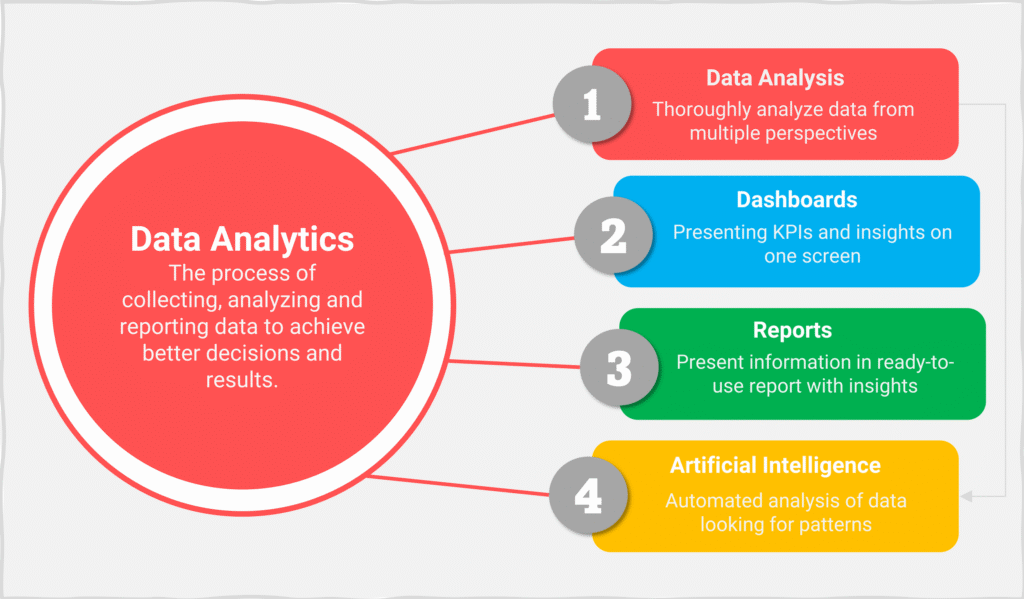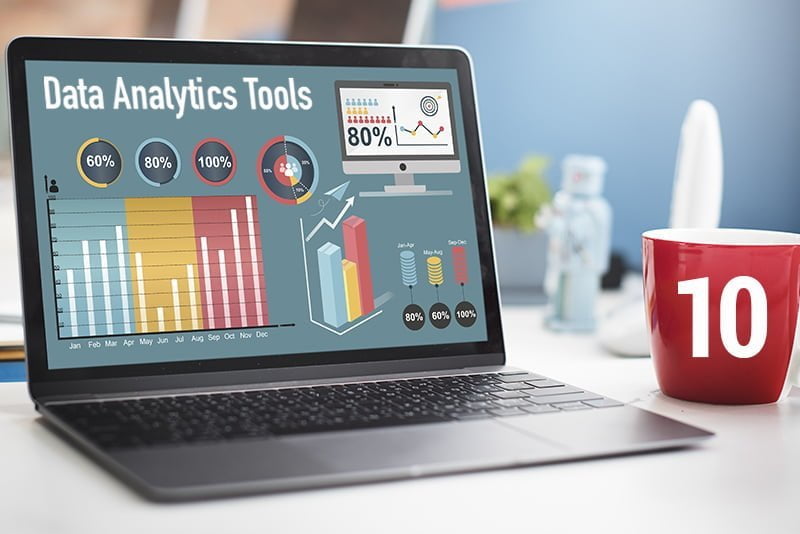In today’s data-driven world, businesses are constantly seeking skilled professionals who can interpret and utilize vast amounts of data to drive informed decisions. Becoming a successful data analyst is not just about mastering tools and techniques; it’s about developing a mindset to solve problems, communicate insights effectively, and continuously adapt to evolving technologies. This guide will provide a step-by-step roadmap to becoming a successful data analyst, complete with actionable advice, essential skills, and strategies to position yourself as a top-tier professional in the field.
Why Data Analysis Matters
Data analysis is the cornerstone of modern decision-making. From identifying market trends to optimizing operational efficiency, analysts play a pivotal role in helping organizations understand and leverage their data. Businesses rely on actionable insights to outperform competitors, and analysts are the bridge between raw data and strategic decisions.
To succeed in this domain, you need a blend of technical prowess, critical thinking, and the ability to communicate complex ideas simply. These qualities make data analysts invaluable across industries like finance, healthcare, retail, and technology.

Essential Skills Every Data Analyst Must Have
- Technical Proficiency
- Programming Languages: Master languages like Python, R, or SQL. Python is especially versatile, offering libraries like Pandas and NumPy for data manipulation, while R excels in statistical modeling.
- Data Visualization Tools: Tools like Tableau, Power BI, or Matplotlib help turn complex datasets into digestible visuals that drive decisions.
- Statistical and Analytical Skills
Understanding key statistical concepts like regression analysis, hypothesis testing, and probability ensures that you can interpret data meaningfully and provide actionable insights. - Problem-Solving Mindset
Data analysis isn’t just about crunching numbers; it’s about finding patterns and addressing real-world challenges. This requires a curious, solution-oriented mindset. - Communication Skills
It’s one thing to uncover insights, but it’s another to convey them effectively to stakeholders. Strong communication ensures your findings drive actionable strategies. - Business Acumen
Aligning your analysis with business objectives amplifies your value as an analyst. Understanding industry-specific needs and key performance indicators (KPIs) is essential.
Step 1: Lay the Foundation
Start by building a solid foundation in mathematics and statistics. These subjects are the backbone of data analysis. Concepts like linear algebra, probability, and statistical inference will form the basis of your analytical skillset.
- Key Action: Enroll in online courses or bootcamps focused on introductory statistics and data analysis. Platforms like Coursera, edX, or Udemy offer high-quality content tailored for beginners.
Next, familiarize yourself with spreadsheet tools like Excel or Google Sheets. While these might seem basic, their advanced functions like pivot tables, VLOOKUP, and data visualization capabilities make them indispensable for quick analyses.
Step 2: Learn Data Manipulation and Programming
Modern data analysis often involves working with large datasets that go beyond what spreadsheets can handle. This is where programming comes into play.
- Python for Data Analysis: Learn libraries like Pandas (for data manipulation), NumPy (for numerical computing), and Matplotlib or Seaborn (for visualization).
- SQL for Databases: Master SQL to query, filter, and manipulate structured data stored in databases.
By building a strong foundation in these tools, you’ll gain the ability to process, clean, and analyze data efficiently.
Step 3: Dive into Data Visualization
Data visualization is a critical skill for any analyst, as it helps translate complex datasets into actionable insights. Decision-makers often rely on visuals like charts, graphs, and dashboards to comprehend and act on analytical findings.
- Why Visualization Matters: Clear and compelling visuals make your insights easier to understand, ensuring stakeholders can quickly grasp key trends and take action.
- Key Tools to Master:
- Tableau: Known for its ease of use and ability to create interactive dashboards.
- Power BI: Integrates seamlessly with Microsoft’s ecosystem, making it ideal for enterprise-level analysis.
- Matplotlib and Seaborn: For Python users, these libraries are excellent for creating custom visuals.
- Practical Tip: Start by replicating existing charts and dashboards. This hands-on approach helps you understand the logic behind effective visualizations. As you grow confident, experiment with different types of charts to see what resonates most with your audience.
Step 4: Develop a Portfolio
A well-curated portfolio is one of the most effective ways to showcase your skills and land a job as a data analyst. It demonstrates not only your technical expertise but also your ability to solve real-world problems.
How to Build Your Portfolio:
- Select Real-World Projects: Focus on projects that simulate challenges faced by businesses. Examples include sales trend analysis, customer segmentation, and operational efficiency improvements.
- Use Public Datasets: Platforms like Kaggle, Google Dataset Search, and Data.gov provide access to a wide range of datasets.
- Document Your Process: Include detailed explanations of your methodologies, from data cleaning and preprocessing to insights and recommendations.
- Showcase Results Visually: Highlight the impact of your work using dashboards, infographics, or case studies.
Pro Tip: Host your portfolio on platforms like GitHub or create a personal website to make it easily accessible to potential employers.
Step 5: Gain Hands-On Experience
Experience is the best teacher in data analysis. Whether it’s through internships, freelance projects, or personal initiatives, real-world exposure builds confidence and hones your skills.
- Internships: Seek opportunities in data-driven industries like finance, marketing, or technology.
- Freelance Platforms: Websites like Upwork and Fiverr allow you to work on diverse projects, from cleaning datasets to building dashboards.
- Hackathons and Competitions: Participate in events hosted by Kaggle or local data science communities. These platforms not only challenge you but also allow you to learn from other participants.
Step 6: Specialize
While generalist skills are essential, specialization sets you apart in the competitive field of data analysis. Consider focusing on an industry or domain that aligns with your interests and strengths.
Popular Specializations:
- Marketing Analytics: Understand customer behavior and optimize campaigns.
- Financial Analytics: Analyze risks, forecast revenues, and optimize budgets.
- Healthcare Analytics: Work with patient data to improve treatments and operations.
- Operations Analytics: Optimize supply chain, logistics, and resource management.
Step 7: Stay Updated
The field of data analysis evolves rapidly. Staying updated with the latest tools, techniques, and trends ensures your skills remain relevant.
How to Stay Ahead:
- Continuous Learning: Enroll in advanced courses on machine learning, big data, or cloud computing.
- Networking: Join LinkedIn groups, attend webinars, and participate in local meetups to connect with industry professionals.
- Subscribe to Industry News: Blogs like Towards Data Science, KDnuggets, and Data Science Central are excellent resources for the latest insights.
Step 8: Master Advanced Analytical Techniques
To stand out in the competitive field of data analysis, you must go beyond the basics and acquire advanced analytical techniques. These skills not only improve the depth of your analyses but also enable you to solve complex problems that can significantly impact business decisions.
Key Areas to Focus On:
- Predictive Analytics:
- Learn methods like regression analysis, time series forecasting, and machine learning algorithms to predict future trends.
- Tools to explore: Python (Scikit-learn), R, and cloud platforms like AWS or Azure Machine Learning Studio.
- Big Data Analysis:
- With the explosion of data, handling large-scale datasets is crucial. Familiarize yourself with big data frameworks like Hadoop and Spark.
- Database skills: NoSQL databases like MongoDB or Cassandra can be invaluable for unstructured data.
- Sentiment Analysis:
- Especially relevant for marketing and social media analysis, sentiment analysis uses natural language processing (NLP) to gauge public opinion or customer feedback.
- Tools: NLTK, TextBlob, or advanced solutions like BERT for NLP tasks.
- Optimization and Simulation:
- Develop skills in optimization techniques to recommend the best course of action, and simulation methods to predict outcomes under various scenarios.
Step 9: Develop Leadership and Business Skills
To transition from a competent analyst to a successful one, you need more than just technical expertise. Business acumen and leadership skills play a vital role in your career growth.
How to Cultivate These Skills:
- Understand Business Context: Learn to align your analyses with organizational goals. This might involve collaborating with business teams, understanding financial metrics, or familiarizing yourself with market dynamics.
- Stakeholder Management: Build rapport with stakeholders by understanding their pain points and delivering insights tailored to their needs.
- Leadership Development: Take the initiative to mentor junior analysts, lead data projects, or present at company-wide meetings to build your leadership credentials.
Step 10: Build Your Personal Brand
In today’s digital age, personal branding is as important as technical skills. By establishing yourself as a thought leader, you can attract job opportunities, freelance projects, or speaking engagements.
Strategies for Personal Branding:
- Share Knowledge:
- Write blogs on platforms like Medium or your own website about your data projects and industry insights.
- Create video tutorials or webinars to explain analytical concepts.
- Engage on LinkedIn:
- Share industry news, comment on relevant topics, and connect with professionals in your field.
- Speak at Events:
- Participate in local meetups or online conferences to share your expertise and expand your network.
Bonus: Tips for Job Hunting
Securing a role as a data analyst requires strategic job hunting. Here’s how to maximize your chances:
- Tailor Your Resume: Highlight relevant skills, tools, and projects. Use quantifiable achievements to demonstrate impact (e.g., “Improved sales forecasting accuracy by 20%”).
- Prepare for Interviews: Practice problem-solving questions, brush up on SQL queries, and rehearse how to explain technical concepts to non-technical stakeholders.
- Leverage Networks: Referrals are one of the most effective ways to land interviews. Don’t hesitate to reach out to connections on LinkedIn or through industry meetups.

Common Mistakes Aspiring Data Analysts Should Avoid
Success in data analysis requires not only the acquisition of skills but also the ability to navigate challenges effectively. Avoiding common pitfalls can accelerate your journey and enhance your performance as an analyst.
- Focusing Only on Tools:
While technical tools like Python or Tableau are essential, remember that tools are just a means to an end. Analytical thinking, problem-solving, and understanding business goals are equally critical. - Ignoring Data Cleaning:
Many new analysts underestimate the importance of data cleaning and preprocessing. However, messy or incomplete data can compromise the accuracy of your analysis. - Overloading Dashboards:
Resist the temptation to include excessive charts or metrics in a single dashboard. Clarity and simplicity are key to effective data visualization. - Failing to Communicate Insights:
Data analysis is only valuable if stakeholders can act on it. Focus on storytelling and align your insights with business objectives to drive impact. - Neglecting Continuous Learning:
The field of data analysis evolves rapidly. Staying updated on emerging trends, tools, and best practices ensures you remain competitive.
Tools and Resources for Aspiring Data Analysts
To thrive as a data analyst, you need access to the right tools and resources. Here are some recommendations to get you started:
Learning Platforms:
- Coursera, edX, and DataCamp offer structured courses on everything from SQL basics to advanced machine learning.
- Kaggle provides tutorials, competitions, and a community for aspiring data scientists and analysts.
Technical Tools:
- Data Analysis: Python (with Pandas, NumPy), R
- Visualization: Tableau, Power BI, Matplotlib, Seaborn
- Databases: SQL, PostgreSQL, MongoDB
- Big Data: Apache Spark, Hadoop
Communities and Blogs:
- Participate in forums like Reddit’s r/datascience or LinkedIn groups for analysts.
- Follow blogs like Towards Data Science, Analytics Vidhya, and KDnuggets for industry insights.
Kickstart Your Journey: Actionable Steps
- Set Clear Goals: Define what you want to achieve as a data analyst—whether it’s excelling in a specific industry, mastering a tool, or solving complex problems.
- Create a Study Plan: Dedicate time each week to learning and practicing new concepts. Focus on one skill at a time for deeper understanding.
- Build a Network: Attend webinars, engage with professionals on LinkedIn, and participate in local data meetups to expand your network and knowledge.
- Start Small: Work on personal projects or volunteer to analyze data for non-profits. These experiences help build confidence and enrich your portfolio.
- Apply for Roles: Tailor your resume and cover letter for each application, showcasing relevant projects and quantifiable achievements.

Becoming a successful data analyst requires a combination of technical skills, strategic thinking, and a proactive mindset. By following the roadmap outlined in this guide, you’ll be equipped to not only break into the field but also excel in your career.
Remember, data analysis is as much about curiosity and adaptability as it is about technical expertise. Embrace challenges, seek continuous improvement, and focus on delivering value to businesses and stakeholders. Your journey to becoming a top-tier data analyst starts now—are you ready to take the first step?



